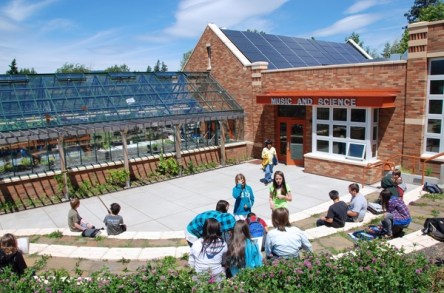It was a different era in 1997, when Portland, Ore.-based New Buildings Institute, a nonprofit organization that promotes energy performance improvements in commercial buildings, was founded. LEED and ENERGY STAR® buildings, Living Buildings, market adoption of renewable energy to any measurable degree—all were yet to come. “Reducing energy use was almost exclusively driven by utility efficiency programs focusing largely on fluorescent lighting upgrades,” NBI reflected recently. Today, At least 50% of customers have the option to purchase renewable electricity directly from their power supplier according to the U.S. Department of Energy. Energy conservation has become considerably more sophisticated in a report NBI recently released to coincide with the organization’s 20th anniversary. While still small in relation to total buildings and floor space, zero building development in the U.S. is accelerating, according to the report. Zero energy buildings—defined by the U.S. Department of Energy as a property or community where “on a source energy basis, the actual annual delivered energy is less than or equal to the on-site renewable exported energy”—are gaining favor across virtually all property types. The recent NBI report, “Getting to Zero Status Update and List of Zero Energy Projects,” highlights nearly 500 zero energy commercial building projects across the U.S. Projects owned by for-profit companies account for 26% of the list. Privately held buildings account for 46% of zero energy buildings, with K-12 schools representing 18%. By contrast, NBI’s first Getting to Zero Status Update in 2012 reported just 60 commercial and multifamily buildings or projects that were either verified as zero energy or approaching that level. Zero energy buildings had the potential to grow in popularity, Greg Zimmerman, executive editor of FacilitiesNet, said in 2010, because they are “the embodiment of sustainability because net-zero is a model that is self-contained—no...

